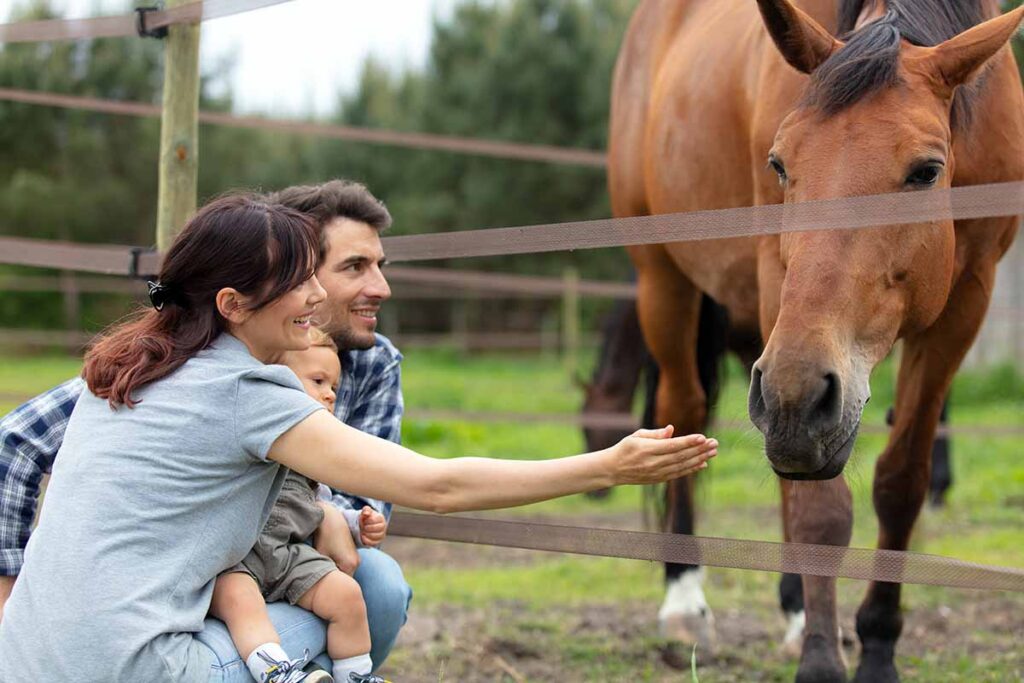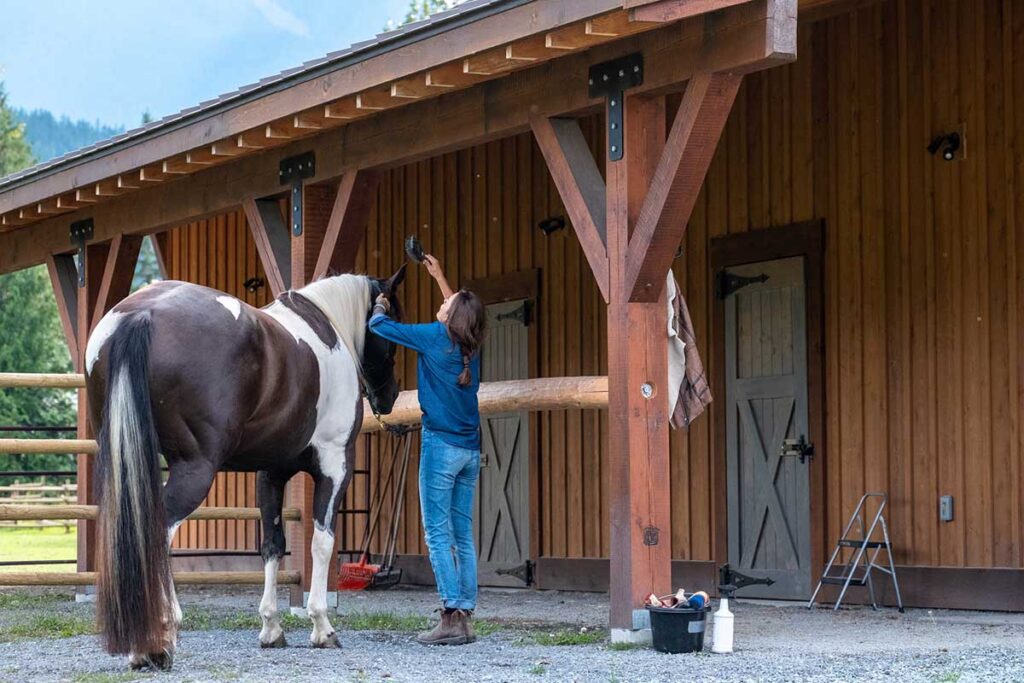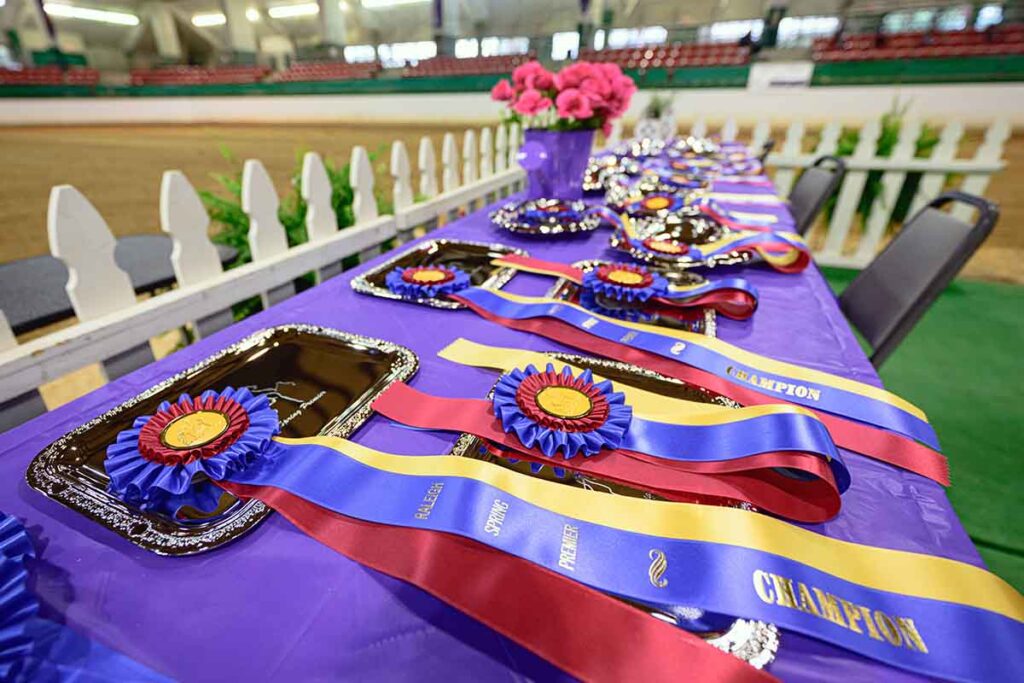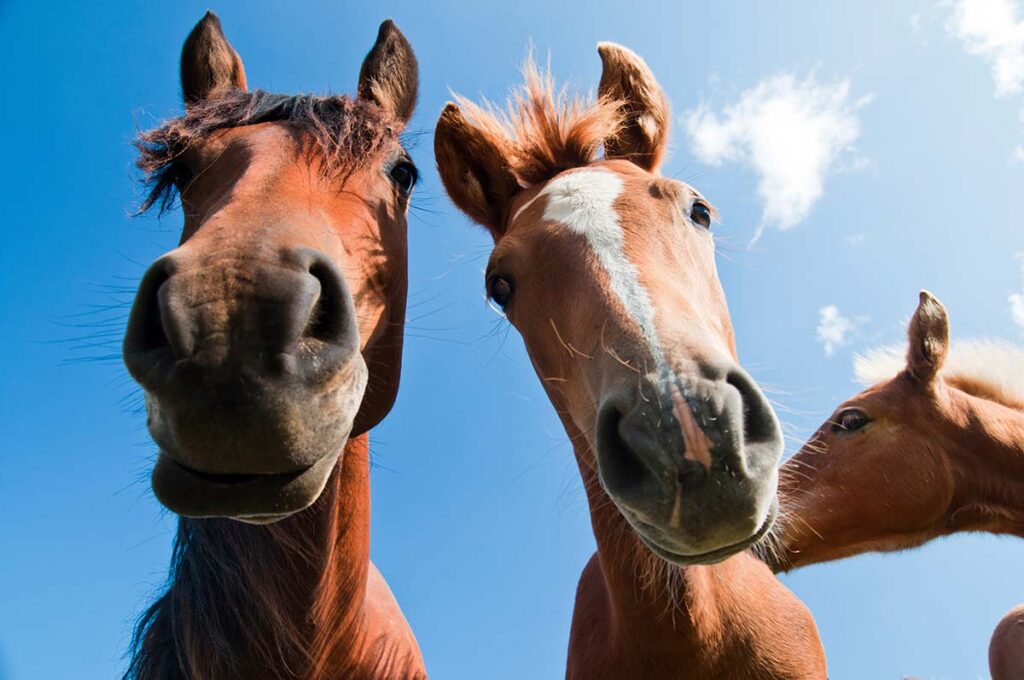How often should you feed a horse? Is it three square meals a day, an all-day grazing buffet, or a combination of approaches? The right feeding schedule for your horse’s lifestyle, age, and activity level can help prevent gastrointestinal issues, stave off boredom, and keep him at an appropriate weight. In this article, we’ll explain how often you should provide your horse with hay, water, and feed, depending on his unique needs.
Water: 24/7
Your horse should have access to fresh, clean, free-choice water all day long. This means keeping buckets and troughs filled and free of debris in stalls and paddocks. If your property is equipped with automatic waterers in stalls and/or in fields, check them regularly to ensure they’re functioning properly. In winter, take steps to prevent water sources from freezing (e.g., breaking the ice, adding insulation, installing heating devices).
Forage: As Much As Possible
In an ideal world, your horse would have access to quality forage (hay or pasture) throughout the day and night. This is how they evolved — as continuous browsers and grazers — and it helps reduce their risk of colic, gastric ulcers, and behaviors such as cribbing.
If your horse is stalled for part or all of the day, you’ll want to provide him with free-choice hay at least every six to eight hours or three to five times per day. We understand that this feeding frequency, however, is labor-intensive and not feasible for many people. Instead, consider offering forage meals in a small-holed haynet or a slow feeder to make them last longer. This is also a smart strategy if your horse is overweight or has metabolic issues that require you to control his food consumption.
Concentrate Feeds: As Needed
If your horse needs more calories than forage alone can provide — if, for instance, he’s in hard work, an older horse, or a young growing horse — you might choose to offer a concentrate feed product. Feed according to the amount and directions on the package’s label and, as with forage, try to spread meals throughout the day.
Take-Home Message
The number of times per day you feed your horse will depend on his housing and management setup. Many small meals throughout the day — even three meals — is far better for your horse’s digestive health than one or two large meals. Find a routine that strikes a balance between your schedule (or the caretaker’s, if he’s boarded) and your horse’s health, and be consistent in the amounts and times you feed.








